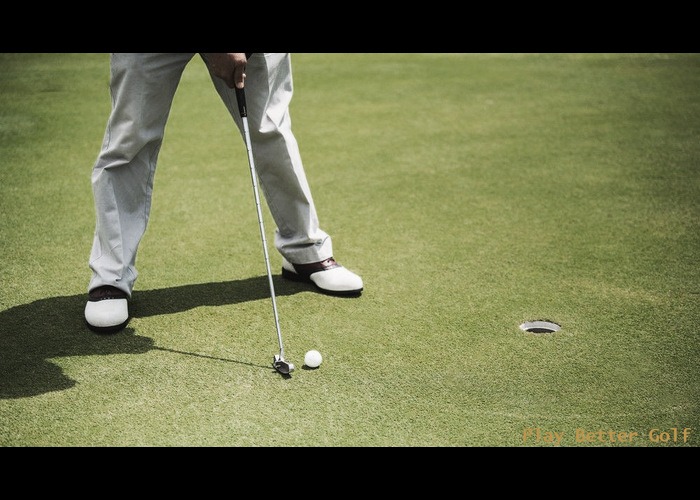
As a golf enthusiast, it’s essential to understand the basics of golf club repair. Whether you’re looking to save money, customize your clubs, or simply enjoy the satisfaction of maintaining your equipment, mastering golf club repair can be a rewarding endeavor. Understanding the various components of a golf club and how they function together is the first step towards becoming proficient in golf club repair. From the grip and shaft to the clubhead, each part plays a crucial role in the performance of the club. By gaining a deeper understanding of these components, you can effectively diagnose issues and implement the necessary repairs to keep your clubs in top condition.
Furthermore, understanding the importance of club fitting and how it relates to repair is vital. Proper club fitting ensures that the equipment matches your physical attributes and swing characteristics, ultimately impacting your performance on the course. Therefore, being knowledgeable about club fitting principles will enable you to make informed decisions when repairing or customizing your golf clubs. With a solid grasp of these fundamentals, you’ll be better equipped to tackle various repair tasks and optimize your golfing experience.
Tools and Materials for DIY Golf Club Repair
Before delving into golf club repair, it’s important to assemble the necessary tools and materials to facilitate the process. Essential tools for DIY golf club repair include a vise, grip tape, solvent, a utility knife, a heat gun, a loft and lie angle machine, a shaft puller, and epoxy. Additionally, having a sturdy workbench with a vise and a well-lit workspace will enhance the efficiency and precision of your repair work.
In terms of materials, you’ll need replacement grips, shafts, ferrules, and epoxy. It’s crucial to select high-quality materials to ensure the longevity and performance of your repaired clubs. By investing in reputable brands and durable materials, you can be confident in the reliability of your equipment. Moreover, having a variety of grip sizes and styles on hand will allow you to customize your clubs to suit your preferences and playing style. By acquiring the right tools and materials, you’ll be well-prepared to tackle a wide range of repair tasks and elevate your golfing experience.
Common Golf Club Issues and Solutions
Understanding the common issues that golf clubs encounter will enable you to identify and address potential problems effectively. One of the most prevalent issues is worn-out or damaged grips, which can compromise your grip stability and control during swings. To remedy this, you can regrip your clubs using the step-by-step guide provided in the subsequent section. Another common problem is the misalignment of loft and lie angles, leading to inconsistent ball flight and accuracy. By adjusting these angles, you can optimize the performance of your clubs and elevate your game.
Moreover, damaged or broken shafts are another frequent issue that golfers encounter. Whether it’s a minor crack or a complete break, knowing how to repair or replace shafts is essential for maintaining your clubs. Additionally, worn or damaged clubheads can impact the trajectory and distance of your shots. Understanding how to refinish and polish clubheads will not only enhance their aesthetics but also ensure their functionality on the course. By familiarizing yourself with these common issues and their respective solutions, you’ll be well-equipped to address any repair challenges that arise.
Step-by-Step Guide to Regripping Golf Clubs
Regripping your golf clubs is a fundamental skill that every golfer should master. Over time, grips wear out due to exposure to oils, dirt, and the natural breakdown of materials. As a result, regripping your clubs is essential for maintaining a secure and comfortable grip during your swings. The following step-by-step guide will walk you through the process of regripping your golf clubs:
Gather Your Materials: Start by gathering the necessary materials, including a vise, solvent, grip tape, a utility knife, and replacement grips. Ensure that your workspace is well-lit and conducive to the regripping process.
Secure the Club in a Vise: Place the club securely in a vise, ensuring that it is stable and won’t move during the regripping process. This will provide a secure base for removing the old grip and installing the new one.
Remove the Old Grip: Use a utility knife to carefully cut through the old grip and peel it off the club. Be cautious not to damage the shaft during this process.
Clean the Shaft: Once the old grip is removed, use solvent to clean the shaft thoroughly, removing any residue or adhesive from the previous grip.
Apply Grip Tape and Solvent: Wrap double-sided grip tape around the shaft, ensuring that it covers the entire grip area. Apply solvent to the tape to activate its adhesive properties.
Install the New Grip: Slide the new grip onto the club, ensuring that it aligns with the desired orientation. Use a twisting motion to slide the grip into place, allowing the adhesive to bond with the tape.
By following this step-by-step guide, you can effectively regrip your golf clubs and maintain a secure and comfortable grip for optimal performance on the course.
Adjusting Loft and Lie Angles
The loft and lie angles of your golf clubs play a significant role in determining the trajectory and accuracy of your shots. Adjusting these angles to match your swing characteristics and preferences is essential for optimizing your performance on the course. The following steps outline the process of adjusting loft and lie angles for your golf clubs:
Use a Loft and Lie Angle Machine: This specialized tool is designed to measure and adjust the loft and lie angles of golf clubs accurately. Secure the club in the machine and ensure that it is stable and positioned correctly for adjustments.
Determine the Desired Angles: Based on your swing characteristics and ball flight preferences, determine the ideal loft and lie angles for your clubs. This will serve as a reference point for making the necessary adjustments.
Make Incremental Adjustments: Using the machine, carefully adjust the loft and lie angles of the club to match your desired specifications. It’s important to make incremental changes and test the club’s performance after each adjustment to ensure the desired outcome.
Verify and Fine-Tune: Once the adjustments are made, verify the loft and lie angles using the machine’s measurements. Fine-tune the angles as needed to achieve the optimal settings for your clubs.
By following these steps and using a reliable loft and lie angle machine, you can effectively adjust the loft and lie angles of your golf clubs to enhance their performance and suit your individual playing style.
Repairing and Replacing Golf Club Shafts
The shaft of a golf club is integral to its performance, providing the necessary flexibility and stability during swings. However, shafts can become damaged or worn over time, impacting the club’s overall functionality. Knowing how to repair or replace golf club shafts is essential for maintaining the integrity of your equipment. The following steps outline the process of repairing and replacing golf club shafts:
Assess the Shaft Damage: Inspect the shaft for any signs of damage, including cracks, dents, or bends. Identifying the extent of the damage will guide your decision to repair or replace the shaft.
Repair Minor Damage: For minor cracks or dents, you can use a shaft repair kit to fill and reinforce the damaged areas. Follow the manufacturer’s instructions carefully to ensure a proper repair.
Replace Severely Damaged Shafts: In cases where the shaft is severely damaged or compromised, it’s best to replace it with a new one. Select a shaft that matches the specifications and characteristics of your original shaft to maintain consistency in your club’s performance.
Secure the New Shaft: Using a shaft puller, carefully remove the old shaft from the clubhead and secure the new shaft in place. Apply epoxy to bond the shaft and clubhead securely, ensuring a stable and durable connection.
By following these steps and exercising caution and precision, you can effectively repair or replace golf club shafts to maintain the performance and integrity of your equipment.
Refinishing and Polishing Golf Club Heads
The clubhead is the primary point of contact with the ball, making it crucial to maintain its condition and functionality. Over time, clubheads can become worn, scratched, or damaged, affecting the club’s performance and visual appeal. Refinishing and polishing golf club heads is an essential aspect of golf club repair, ensuring that the clubs perform optimally and look aesthetically pleasing. The following steps outline the process of refinishing and polishing golf club heads:
Prepare the Clubhead: Remove the clubhead from the shaft and clean it thoroughly to remove any dirt, debris, or residue. This will provide a clean surface for refinishing and polishing.
Repair Surface Imperfections: Use a suitable filler or epoxy to fill any scratches, dents, or blemishes on the clubhead’s surface. Smooth out the filler to create a seamless and uniform surface.
Sand and Polish the Clubhead: Use sandpaper of varying grits to sand the clubhead’s surface, starting with a coarse grit and gradually progressing to a finer grit for a smooth finish. Once sanded, polish the clubhead using a polishing compound to restore its luster and shine.
Apply a Protective Finish: To enhance the durability and aesthetics of the clubhead, apply a protective finish or coating to seal the surface and prevent future damage. This will ensure that the clubhead maintains its appearance and performance over time.
By following these steps and utilizing the appropriate materials and techniques, you can effectively refinish and polish golf club heads to enhance their performance and visual appeal on the course.
DIY Golf Club Repair Tips and Tricks
In addition to mastering the specific repair processes, there are several tips and tricks that can enhance your DIY golf club repair experience. These insights can help you tackle repair tasks more efficiently and effectively, ultimately optimizing the performance and longevity of your golf clubs. Here are some valuable DIY golf club repair tips and tricks to consider:
Invest in Quality Tools and Materials: High-quality tools and materials are essential for achieving professional-grade repair results. Invest in reputable brands and durable equipment to ensure the reliability and longevity of your repairs.
Follow Manufacturer Guidelines: When using replacement components or repair kits, carefully follow the manufacturer’s guidelines and instructions. This will ensure that you execute the repair processes correctly and achieve the desired outcomes.
Practice Patience and Precision: DIY golf club repair requires patience and precision. Take your time to perform each task meticulously, paying attention to detail and ensuring that the repairs are carried out accurately.
Seek Professional Advice When Needed: If you encounter complex repair challenges or are unsure about certain processes, don’t hesitate to seek advice from professional club fitters or repair technicians. Their expertise can provide valuable insights and guidance for your repair endeavors.
By incorporating these tips and tricks into your DIY golf club repair approach, you can elevate the quality and effectiveness of your repair work, resulting in enhanced performance and satisfaction on the course.
Safety Measures for DIY Golf Club Repair
While DIY golf club repair can be a rewarding and cost-effective approach to maintaining your equipment, it’s crucial to prioritize safety throughout the repair processes. By adhering to essential safety measures, you can mitigate potential risks and ensure a secure and efficient repair experience. Here are some key safety measures to observe when engaging in DIY golf club repair:
Use Personal Protective Equipment: Wear protective gloves and eyewear to safeguard yourself from potential injuries during the repair processes. This is especially important when working with tools, solvents, and adhesives.
Secure Work Area: Ensure that your work area is well-organized and free from hazards that could cause accidents or injuries. Keep tools and materials properly stored and maintain a clutter-free workspace for optimal safety.
Handle Tools and Equipment Carefully: Exercise caution when using sharp tools, heat guns, and other equipment to prevent accidental injuries. Follow the manufacturer’s guidelines for safe usage and storage of tools.
Work in a Well-Ventilated Area: When using solvents, adhesives, or other chemical compounds, work in a well-ventilated area to minimize exposure to fumes and ensure a healthy work environment.
By prioritizing safety and taking proactive measures to mitigate potential risks, you can engage in DIY golf club repair with confidence and peace of mind, ultimately enhancing the performance and longevity of your equipment.
Conclusion
Mastering golf club repair through DIY endeavors offers numerous benefits for golf enthusiasts, ranging from cost savings to personalized customization and a deeper connection with your equipment. By understanding the fundamentals of golf club repair, assembling the necessary tools and materials, and familiarizing yourself with common repair processes, you can elevate your golfing experience and maintain your clubs in top condition. From regripping and adjusting loft and lie angles to repairing and replacing shafts and refinishing club heads, the comprehensive DIY guide presented in this article equips you with the knowledge and skills to effectively maintain and enhance your golf clubs.
Furthermore, by incorporating valuable tips, tricks, and safety measures into your DIY repair approach, you can ensure a secure and efficient repair experience while optimizing the performance and longevity of your equipment. Whether you’re a seasoned golfer or a beginner looking to delve into the realm of golf club repair, this comprehensive guide empowers you to take control of your equipment and enjoy a fulfilling and rewarding journey in DIY golf club repair.
As you embark on your DIY golf club repair endeavors, remember to approach each task with patience, precision, and a commitment to safety. By honing your skills and knowledge in golf club repair, you can not only enhance the performance of your equipment but also cultivate a deeper appreciation for the craftsmanship and intricacies of the sport. Embrace the opportunity to elevate your golfing experience through DIY repair, and savor the satisfaction of mastering the art of golf club maintenance and customization.
FAQs
1. What are the common issues that can be addressed through DIY golf club repair?
- Common DIY repairs include regripping, replacing ferrules, adjusting loft and lie angles, and fixing minor dents or scratches.
2. How often should I regrip my golf clubs?
- It’s recommended to regrip your clubs every 1-2 years, depending on how frequently you play. Signs of wear, such as cracks or loss of tackiness, indicate the need for regripping.
3. Can I adjust the loft and lie angles of my golf clubs at home?
- Yes, you can adjust loft and lie angles at home using a loft and lie bending machine. However, it requires precision and careful calibration to avoid damaging the club.
4. What tools do I need for basic golf club repairs?
- Essential tools include a rubber vise clamp, grip tape, solvent, a utility knife, a regripping jig, and a loft and lie bending machine for more advanced adjustments.
5. How do I know when it’s time to replace a golf club shaft?
- Consider replacing a shaft if it’s visibly damaged, shows signs of rust, or if you want to experiment with different shaft flex options for improved performance.
6. Can I repair a dent in my golf club head?
- Small dents can often be repaired using a rubber mallet, while larger dents may require professional assistance. It’s crucial to be cautious and avoid causing further damage during the repair process.
7. Are there any safety precautions I should take during DIY golf club repair?
- Always wear safety glasses when performing any repairs. When using a loft and lie bending machine, follow proper guidelines to prevent injury or damage to the club.
8. How do I determine the correct grip size for my golf clubs?
- Grip size is often a matter of personal preference. However, factors like hand size and grip thickness can help guide your choice. Experimenting with different sizes can help you find the most comfortable option.
9. Can I reuse old grips when regripping my golf clubs?
- While it’s possible to reuse grips, it’s generally recommended to use new ones for optimal performance. Old grips may have lost their tackiness and won’t provide the same level of control and comfort.
10. Where can I find resources or tutorials for DIY golf club repair?
- Online platforms, golf forums, and tutorial videos on websites like YouTube are excellent resources for learning DIY golf club repair techniques. Always refer to reliable sources and follow step-by-step instructions carefully.




